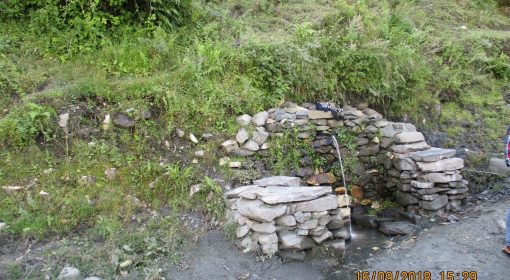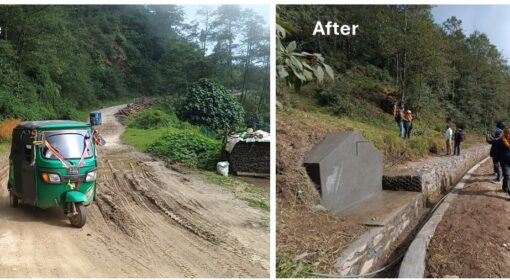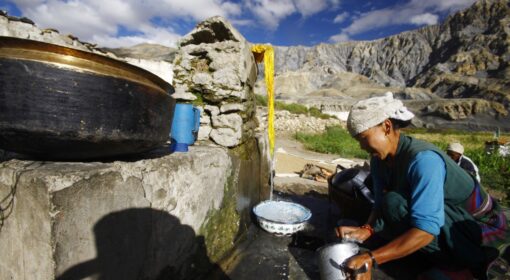By Saroj Yakami[1], Luwieke Bosma1, Madhav Dhakal[2], Mahewor Ghimire[3], Anastasia Deligianni1, Frank van Steenbergen1
Published on the occation of World Water Day 2022 – Groundwater: Making the Invisible Visible
Mountain springs are the primary source of water for rural households in the Himalayan region. The natural springs represent the groundwater storage within the catchments, which form an important component of the Himalayan water budget (Andermann et al. 2012). Springs are often the only accessible sources of water, providing for drinking, domestic and agricultural uses for people residing in the hills, mountains, peri-urban and urban centres in the HKH. They are the lifeline to many people, terrestrial and aquatic ecosystems. They sustain the base flows of rivers and rivulets, as well as sustain riverine ecosystem in the dry season that lasts 9 months.
A major concern is that springs in the Himalayan areas are drying up or their discharge is reducing. According to a NITI Aayog report (2018), nearly 50% of springs in the Indian Himalayan Region (IHR) have dried up or have reduced discharge, while also spring water quality has diminished. A study of a watershed in Nepal records decreased flow in 73% of springs, and the drying up of 12% of springs over the past decade (Paudel and Duex 2017). An assessment on springs by ICIMOD in Namobuddha Municipality of Kavrepalanchowk district, Nepal has revealed that out of the 50 springs surveyed, 22 have dried up as a result, many people have started excavating wells to tap water from already stressed aquifers.
The Himalayan ecosystem, and especially mountain aquifer systems, is fragile and susceptible to both natural and human-induced changes. Natural changes include rising temperatures and erratic, high intensity rainfall, and seismic activity. Anthropogenic changes include degradation of land and slopes, associated with land-use changes and road construction. Both natural and anthropogenic changes are belied to be the causes of drying up of springs. Springs users of Nepal have shared that the perennial springs become seasonal and seasonal springs become dry as a result of erratic rainfall of high intensity and short duration.
A countrywide study conducted in the 300 municipalities and rural municipalities in 2020 by Nepal Water Conservation Foundation (NWCF) and the International Centre for Integrated Mountain Development (ICIMOD) found that springs are drying up in 74 percent of the municipalities. Major cause, as explained by officials of municipalities, is haphazard road and infrastructure construction as (51%) followed by earthquakes (46%), climate change (45%), deforestation (32%), landslide (30%), and other causes such as hydropower tunnel construction (https://www.spotlightnepal.com/2020/12/10/drying-springs-threat-human-survival/).
Villages and settlements in mountain areas are already facing acute water shortages especially in the dry period, where you are at a great disadvantage when living at a high altitude, since most fresh water is flowing down and not readily accessible to them.
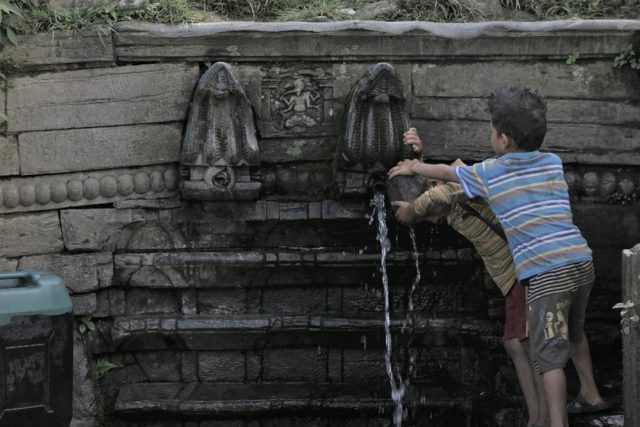
The rapid expansion of the road network in the mountain areas is also a major factor for demise of mountain springs. Although the intensity of its effect is not well understood, it is making scars in Himalayan ecology, while road construction can also open up springs from mountain aquifers. Either by the removal of unconsolidated material or the cutting of rock formations, road development exposes the water bearing strata, making them bleed. If these springs that have opened up are not controlled and managed in good manner, it will empty aquifer systems, aggravating fragile water supply systems in mountain areas. Furthermore, spring water that seeps onto the road is causing damage and undermining the road. For instance, it can damage the road surface directly by destabilizing or by creating depressions on the road, especially in monsoon, causing uncontrolled and erosive run-off from road bodies. Instead, such sources should be safeguarded, for instance with a spring-box and auxiliary structures to protect the source and install a faucet/or closed outlet system. Thereby killing 2 birds with 1 stone, providing safe and reliable water to people in very remote areas and protecting the road, ensuring longevity and improved connectivity to basic facilities and services.
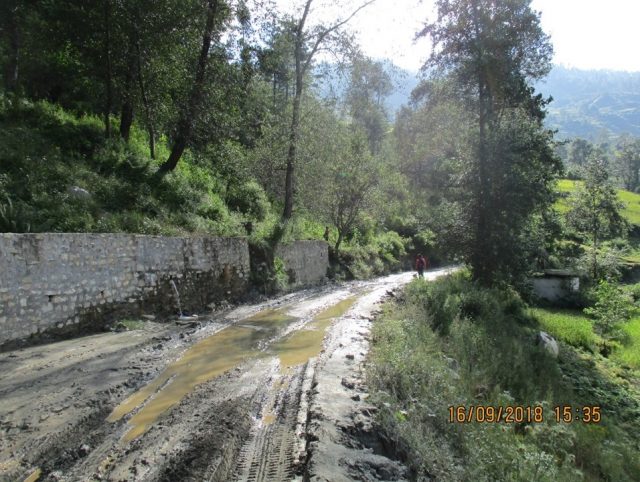
The systemic connection between road development and spring protection is necessary. A first step is to have thorough understanding of the presence of mountain aquifers with the help of local knowledge, and careful observation of vegetation, mountain formation and the presence of existing springs, before constructing roads. When it is identified that there are springsheds in the ‘road catchment’, we need to consider this carefully for the road alignment, landscape buffer management and drainage structures. When a spring is opening up due to road construction, we must carefully protect both spring and road, and its surrounding. A choice must be made whether the spring will be used or not. Some recommended practices for spring management along the roads are shown in table below.
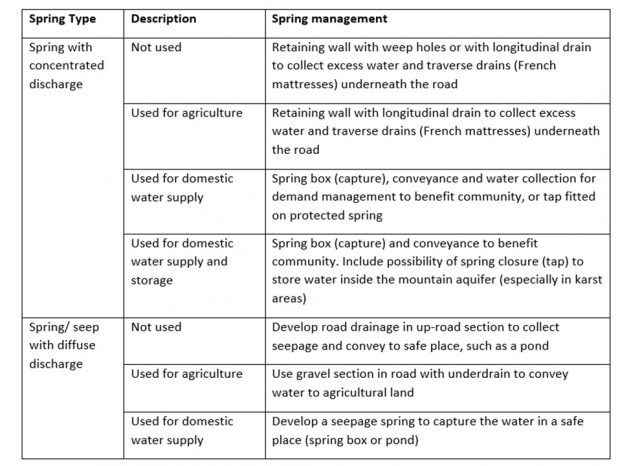
This leads us to the issue linked to identification of recharge area and developing springshed management. Delineation of recharge area will help to identify strategic area from where maximum recharge is expected with investing minimum human and financial resources. This plays significant role in determining desirable activities to increase the recharge and to maintain water quality. To augment recharge, it is important to stop rainwater simply running off the surface and infiltrate as much as in ground through physical and biological measures. For instance, landscape buffering measures like ponds, percolation pits, half-moons or eye-brows pit, contour trenches, deep recharge pits, terraces, check dams, suitable vegetative measures such as palisades, brush layering, or combinations of these.
Related links for Key Publications
- Guideline on Protecting & Developing Springs in Hill and Mountain areas (https://metameta.nl/serverspecific/default/images/File/green-roads-for-water/Spring_guideline_Hill_Mountain_local_road.pdf)
- “Protocol for reviving Springs in the Hindu Kush Himalayas: A Practitioner’s Manual (https://lib.icimod.org/record/34040)”
- Green Roads for Water: Guidelines for Road Infrastructure in Support of Water Management and Climate Resilience (https://openknowledge.worldbank.org/handle/10986/35752)
- Green Roads for Water (https://roadsforwater.org/)
[1] MetaMeta (https://metameta.nl/)
[2] ICIMOD (https://www.icimod.org/)
[3] Department of Local Infrastructure (https://doli.gov.np/doligov/)

